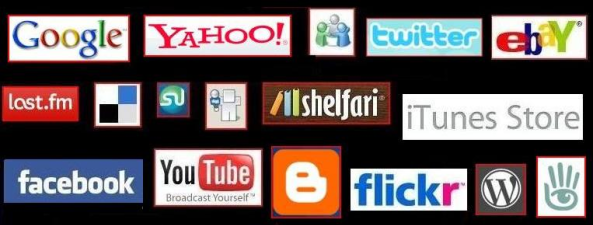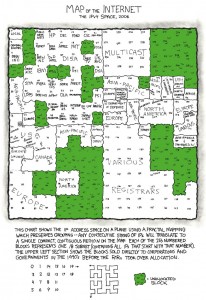
Back in 1989, when Tim Berners-Lee invented the world wide web, he wouldn’t have imagined his invention would scale the heights we see today. The internet is one of the most popular and widespread technological blessing which achieved the highest penetration into human life in a very short span of time. Internet is now used by almost everybody everywhere and is a part of our routine! It is one of the biggest blessings upon mankind by the information technology revolution.
Traditionally internet has been of a one-sided nature. Users would open their browser, connect to a website and gain “static” information from it. Users didn’t really own any content on the internet until the introduction of web mails. This was when people could register on a mail service and a send a text message to other users also registered on a mail service. The flavor of multimedia came into being in around the year 1999 with file sharing services like Napster enticing users to share content with others on the internet. Though this phenomenon gave way to legal issues, it was a platform for what would later emerge as the most widely accepted and popular form of the internet, the Web 2.0.
The term “Web 2.0” was first coined by Tim O’Reilly in 2004. This doesn’t refer to a technological enhancement of the internet, but refers to the way people started using the internet. It is all about creativity, information sharing and collaboration among users. Blogs, wikis, picture sharing sites, video sharing sites, social networking sites, podcasts and other sites which allow users to collaborate content are the outcome of this web 2.0 revolution. Users own the content, the internet helps them share it with others across the globe who have a browser and an internet connection. Till a few years ago, a user had to have a computer to log on to the internet. Technological advances have made internet more accessible in the form of smart phones and other mobile devices. This paradigm shift has drawn many more people into using the internet and the vast increase in the number of internet users over the past few years can no doubt be attributed to this.
“Cloud computing” is another trend now where users (business/individuals) do not worry about the infrastructure involved in a service offering, rather just care about the software being offered as a service. This makes things way easy for especially SMEs with lower budgets, assisting rapid deployment of their products or services into the market. This trend gave birth to a new business model involving infrastructure services (like data centers) serving their clients (the actual businesses) which in turn serve their customers, all through the spectacular wire(less)-based-technology called internet.
Among the web 2.0 pioneers stand the giants in web world Google, Yahoo, Microsoft along with other players. Though it is impossible to list down the applications we all like, notable among them are YouTube, Flickr, Blogger, Facebook, Last FM, eBay to name a few. We can’t imagine our lives without these great apps these days. Not only has it made information sharing easy, it has made it easy to get information come to you. With content aggregation tools like Google Reader, it is so much easy to get content from your favorite websites or blogs delivered to your account. What else would be a better definition of “information at your fingertips”? Such applications are called “mashups”. Other popular examples are Google Maps, Yahoo pipes, Digg, etc.
While Wikipedia has become a standard encyclopaedia for everyone, sites like Facebook and Orkut have become a convenient way of staying in touch with family and pals. Likewise, Amazon and eBay has become the favorite destinations for shoppers online. Now, people shop from the luxury of their couch and get items delivered to their home at no or nominal cost. The concept of online shopping became popular after the introduction of “Viaweb”, a web based online store creation tool. Another tool worth mentioning is a “blog”. Short for “web log”, it generally refers to a site maintained by an individual. Blogging is one of the most useful results of the web 2.0 phenomenon enabling many amateur and professional writers to express their ideas easily and effectively. A large number of people ranging from kids to oldies blog, thanks to tools from Google (Blogger), Microsoft (Spaces), WordPress, etc. When people upload content on the internet, they also want it to be searchable. This is facilitated by tagging the content. “Tags” are keywords which describe what the content is about. This concept is referred to as Folksonomy in the web 2.0 lingo. Go to this site for an extensive web 2.0 site listing.
Speaking of Web 2.0 and not mentioning YouTube and Flickr? That would be awful :). Undoubtedly the favorite apps around in the multimedia category, both have a similar history. Both were not started by the companies that currently own them. Google bought YouTube in the year 2006 and Yahoo bought Flickr in the year 2005, both aiming at expanding their umbrella of services offered to attract more users. Both companies extensively depend on the advertising revenue from their sites. This advertising business model has been a very successful and lucrative one as seen in the case of web giants like Google, Yahoo and Microsoft which have multiplied their revenues quite fast.
I somehow feel this is just the first phase of the internet phenomenon. With the growing popularity of the internet, however, it is a known fact that we would soon (some say it could be as early as 2010) run out of the IP addresses the current infrastructure can support. We already see network equipment being manufactured to be IPv6 ready. It would be soon that the world would migrate from IPv4 networking technology to IPv6 technology and when this happens, a whole new opportunities galore would open up inviting more and more users to innovate and contribute to make the internet even more useful and successful. Compared to IPv4, IPv6 would support thousands of times the number of addresses. In the cartoon above from xkcd titled “Map of the Internet – IPv4 space, 2006”, the white area represents addresses already taken and the green patches represent available ones. There is a comment on the site which reads “For the IPv6 map, just imagine XP default desktop picture”! There is sure a long way to go for this engineering marvel of the century.
Update: Here is what Google has to say about the next internet!









6 responses to “Internet until now…”
Awesome presentation of trends in internet and also informative about various web technologies. We need to accept web has shrunk earth in size through emails and chat machines.
twitter is my favourite and helps me in interacting with my busy pals and following them.
still the there is lot of scope and space to explore in web2sms technologies .
Thanks Sai, though emails and chat have revolutionized the way we work and communicate, it makes me believe that we are going to see more such "super-tools"…
The way internet is witnessing colossal advancements in features, trends, technology and magnitude it would be hardware limitation that would be bottleneck, if nothing breakthrough developments take place on that front. I remember reading that Youtube alone consumes as much bandwith as the 'whole internet' took in 2000. Scary!
Very true Karan, hardware is the limitation! The servers of sites like YouTube run into lots of TBs already…in fact secure data storage is another business too as I mentioned. With online applications substituting their offline counterparts, the demand for storage and bandwidth is only heading up hill!
[…] – bookmarked by 1 members originally found by RussRew on 2008-11-16 Internet until now… http://woikr.com/internet/internet-until-now/ – bookmarked by 3 members originally found by […]
[…] the ever growing social websites and gaming portals – a part of our personal life has gone to the cloud, some of it public. This […]